#nazikeda kadin
Explore tagged Tumblr posts
Photo


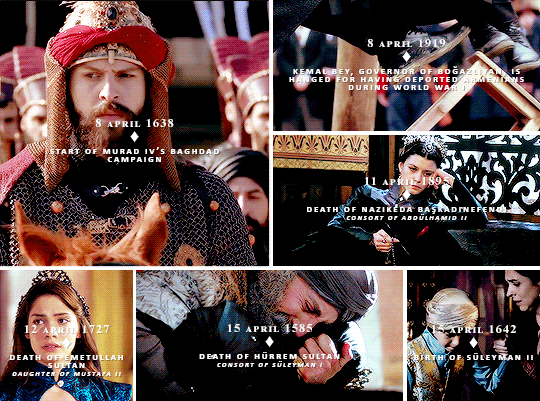
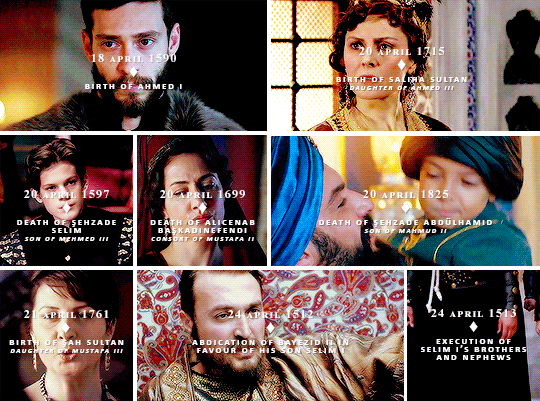
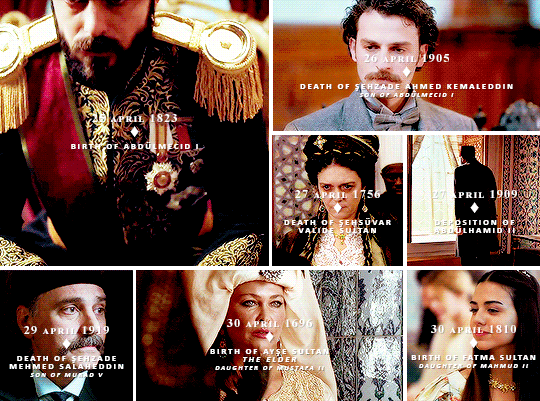
𝐈𝐧 𝐭𝐡𝐞 𝐦𝐨𝐧𝐭𝐡 𝐨𝐟 𝐀𝐩𝐫𝐢𝐥 𝐢𝐧 𝐎𝐭𝐭𝐨𝐦𝐚𝐧 𝐡𝐢𝐬𝐭𝐨𝐫𝐲
#history#historyedit#ottoman history#ayse sultan daughter of murad iii#haseki hurrem sultan#nazikeda kadin#emetullah sultan daughter of mustafa ii#saliha sultan daughter of ahmed iii#alicenab kadin#sah sultan daughter of mustafa iii#sehsuvar sultan#ayse sultan daughter of mustafa ii#fatma sultan daughter of mahmud ii#ottomanladiesedit#*everymonth#abdulhamid i#abdulhamid ii#murad iv#selim i#abdulmecid i
165 notes
·
View notes
Note
This is probably a weird question but were there any tall concubines (5'7,5'9,5'10).
Sakaoğlu says Turhan Hatice Sultan was tall, delicate, with white skin and blue eyes
Emetullah Rabia Gülnüş Sultan was said to have been tall by the Venetian ambassador because he saw her garments and apparently they looked like a tall woman's
Gülistu IV. Kadınefendi, consort of Abdülmecid I, was described as tall by Leyla Açba
Ceylanyar II. Hanımefendi, consort of Abdülmecid I, was described as tall and with long gold hair
Çeşmiferah Hanımefendi, consort of Abdülmecid I, was described by Princess Mülkicihan Açba as tall and blonde
Elaru Mevhibe Kadınefendi, Senior Consort of Murad V, was tall and with hazel eyes
Nazikeda Başkadınefendi, the Senior Consort of Abdülhamid II, was described as quite tall with black eyebrows, black eyes and pink skin
Dilpesend III. Kadınefendi, consort of Abdülhamid II, was tall with brown hair
Mezide Mestan III. Kadınefendi, consort of Abdülhamid II, was timid, tall, with dark brown hair and brown eyes
Sazkar Başhanımefendi, consort of Abdülhamid II, was tall with blue eyes and blonde hair
Peyveste II. Hanımefendi, consort of Abdülhamid II, was described by her niece Princess Leyla Açba as tall, with green eyes and auburn hair
Fatma Pesend III. Hanımefendi, consort of Abdülhamid II, was described by Princess Leyla Açba as tall with blue eyes and long curly brown hair
Behice IV. Hanımefendi, consort of Abdülhamid II, was tall, blonde and with blue eyes
Nazperver III. Kadınefendi, consort of Mehmed V, was tall and plump
Emine Nazikeda BaşKadınefendi, Senior Consort of Mehmed VI, was tall, with very light brown eyes and long brown hair
Şadiye Müveddet II. Kadınefendi, consort of Mehmed VI, was tall, with blue eyes and auburn hair
Nevvare Başhanımefendi, consort of Mehmed VI, was tall, with green eyes and long black hair
İnşirah II. Hanımefendi, consort of Mehmed VI, was tall with gorgeous blue eyes and very long brown hair
Atiye Mehisti III. Kadınefendi, consort of Caliph Abdülmecid II, was tall, with blue eyes and light brown hair
#anon#ask post#ask: ottoman history#turhan hatice sultan#emetullah rabia gulnus sultan#gulistu kadin#ceylanyar hanim#cesmiferah hanim#elaru mevhibe kadin#nazikeda kadin#dilpesend kadin#mezide mestan kadin#sazkar hanim#peyveste hanim#fatma pesend hanim#behice hanim#nazperver kadin#emine nazikeda kadin#sadiye muveddet kadin#nevvare hanim#insirah hanim#atiye mehisti kadin#Anonymous
21 notes
·
View notes
Photo




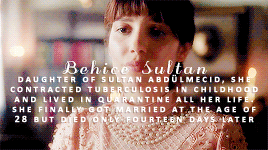

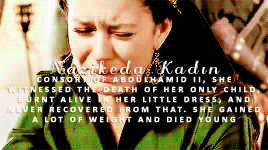
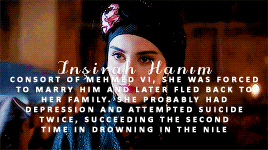
ottoman women who had tragic lives
#history#historyedit#ottoman history#olivera despina hatun#afife kadin (mustafa ii)#insirah hanim#hatice sultan daughter of murad v#mahidevran hatun#behice sultan daughter of abdulmecid i#nazikeda kadin#meylisah hatun
1K notes
·
View notes
Note
I'm currently watching MC and looking at Hatice, I was wondering if there ever was something recorded for a sultana or concubine that today we would classify as a mental illness?
I am not a psychologist or a psychiatrist so I don’t want to diagnose mental illnesses to people who have been dead for centuries but we have a couple of times in which mental illness is mentioned:
Adilşah Kadın, mother of Hatice Sultan and consort of Mustafa III, stated that her daughter had developed depression while living in the Old Palace. For this reason she asked the new sultan to find a husband for her so that she could leave that stifling environment.
Inşirah Hanım committed suicide so it’s safe to say that she had developed some kind of depression at least. Her niece had actually saved her the first time but could do nothing the second time she threw herself in the Nile.
Nâzikedâ Başkadınefendi saw her only child - Ulviye Sultan - burning alive and never recovered. Again, we cannot be sure that she was mentally ill but the shock never went away and she died very young
Off the top of my head I could only come up with these examples. Mental illness is a very tricky subject because people usually hide these things and because it’s very difficult to detect from records.
#anon#ask post#ask: ottoman history#hatice sultan daughter of mustafa iii#insirah hanim#nazikeda kadin
18 notes
·
View notes
Photo








sudden/tragic/mysterious deaths in the harem - requested by @kinda-real-awkward
#history#historyedit#meyliservet kadin#kosem sultan#kaya ismihan sultan daughter of murad iv#haseki hatice muazzez sultan#unnamed daughters of murad iii#sehzade omer son of osman ii#sehzade mehmed son of suleyman i#ulviye sultan daughter of abdulhamid ii#nazikeda kadin#ottomanladiesedit#*requested
2K notes
·
View notes
Text
On this day, 5 October, in Ottoman history:
5 October 1875 - death of Ulviye Sultan: daughter of Abdülhamid II and Senior Imperial Consort Nâzikedâ Başkadınefendi, she was born in Dolmabahçe Palace in 1868. She died at the age of 7 in a very tragic way: while her mother was playing the piano, Ulviye Sultan was left unsupervised and started playing with some matches. Her little dress caught fire but the golden belt she wore at her hips trapped her inside of it, even though her mother burned her hands trying to free her. Panicked, Nazikeda took the child into her hands and ran down the stairs, screaming for help, but the only worsened the situation and poor Ulviye Sultan burned alive. She was buried in the New Mosque.
#history#ottoman history#on this day in history#on this day in ottoman history#ulviye sultan daughter of abdulhamid ii#nazikeda kadin#late ottoman empire
14 notes
·
View notes
Note
Hi,I was just curious in your opinion what sultana's lived the most tragic lives,Hatice Muazzez is one of them in my opinion.
Hi! I agree with you, I think Hatice Muazzez led a tragic life. She was separated from her child so soon and probably saw him just a handful of times before her death.
Off the top of my head, I’d say Nazikeda Baş Kadın too. Her only daughter died in such a violent and awful way, burned alive trapped inside her dress... I can’t imagine what she felt when she could only watch while her daughter was slowly dying.
I’m sure there are countless of women who led tragic lives in the harem, especially those who lost their children or who just couldn’t reconcile with the idea of being a slave, but Nazikeda’s story just got to me.
14 notes
·
View notes
Photo

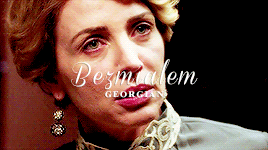

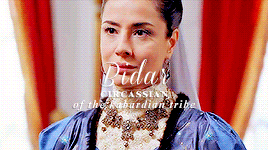

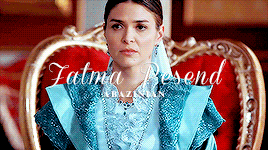
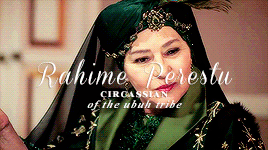



Notable Ottoman consorts hailing from the Caucasus -- requested by anon
#history#historyedit#ottoman history#mahidevran hatun#haseki sivekar sultan#bidar kadin#rahime perestu sultan#bezmialem sultan#bedrifelek kadin#fatma pesend hanim#serfiraz hanim#emine nazikeda kadin#servetseza kadin#ottomanladiesedit
148 notes
·
View notes
Photo




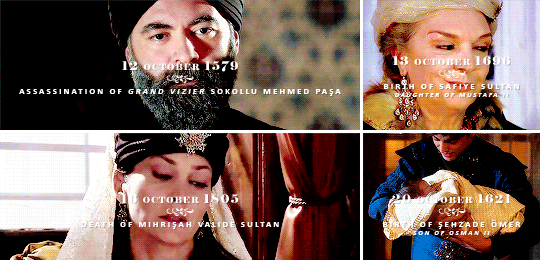




𝐢𝐧 𝐭𝐡𝐞 𝐦𝐨𝐧𝐭𝐡 𝐨𝐟 𝐨𝐜𝐭𝐨𝐛𝐞𝐫 𝐢𝐧 𝐨𝐭𝐭𝐨𝐦𝐚𝐧 𝐡𝐢𝐬𝐭𝐨𝐫𝐲
#history#historyedit#ottoman history#*everymonth#ahmed iii#tirimujgan kadin#ulviye sultan daughter of abdulhamid ii#sehzade mustafa son of suleyman i#haseki rabia sultan#emine nazikeda kadin#ayse sultan daughter of ahmed iii#safiye sultan daughter of mustafa ii#mihrisah sultan#sehzade omer son of osman ii#sehzade hatun daughter of murad ii#gevherhan sultan daughter of ibrahim i#meyliservet kadin#mehmed iv#selcuk hatun daughter of mehmed i#sehzade murad son of suleyman i#sehzade mahmud son of suleyman i#durriaden kadin#osman iii
171 notes
·
View notes
Photo

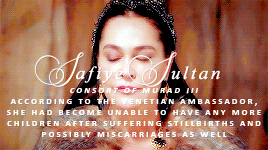
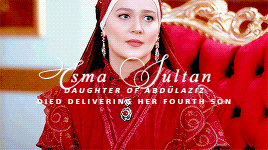
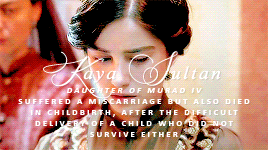
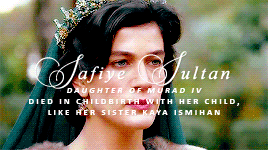



OTTOMANLADIES’ 2ND BIRTHDAY CELEBRATIONS
ottoman women who suffered miscarriages, stillbirths, became unable to have children or died in childbirth – requested by anon
#history#historyedit#ottoman history#safiye sultan#ismihan sultan daughter of selim ii#kaya ismihan sultan daughter of murad iv#safiye sultan daughter of murad iv#esma sultan daughter of abdulaziz#bedrifelek kadin#emine nazikeda kadin#hayriye hanimsultan#ottomanladiesedit#*requested
366 notes
·
View notes
Photo








underrated (in my opinion) ottoman imperial ladies -- requested by anon
#history#historyedit#ottoman history#bezmiara kadin#handan sultan#fatma sultan daughter of abdulmecid i#servetseza kadin#hatice sultan daughter of mustafa iii#serfiraz hanim#hatice sultan daughter of murad v#nazperver kadin#emine nazikeda kadin#*requested#ottomanladiesedit#long post
627 notes
·
View notes
Note
Hey, what were some technique Hurrem (or any lady that became successful in the harem with the sultans) used to attract and keep the sultan’s eyes on her and her only? There had to be other women vying for his attention, yet he devoted himself to Hurrem. Did the concubines have to be particularly cunning to manipulate the sultans or was it something else?
Mmh sex? Physical attraction? You have to remember those girls were trained to please the sultan in bed and it’s possible that the valide sultan instructed them about what her son liked (disgusting, I know, but they were practical people)
Sometimes it could have been a skill? Let’s say a sultan is a music lover, if a concubine is particularly skilled and can play at least one instrument, it’s more probable that he will favour her?
Peirce alleges even “guarded flirtation” among the things a concubine could do to engage the sultan during one of the receptions organised by the valide sultan. “Did Roxelana beguile Suleyman with the laugh or the smile for which she presumably earned her Ottoman name, Hurrem?”
It depends on the sultan whether the concubines had to be particularly cunning or not. A concubine must be at least moderately cunning to live in the harem, anyway; she must be ready to do whatever it takes to ensure her own survival, but it’s not a given if every sultan liked that cunning to be shown. Murad IV loved quick-witted women, he liked to stroll in the gardens and flirt with his own concubines. Maybe some other sultan preferred sweet and demure concubines. It’s entirely up to them.
It’s clear that Süleyman liked Hürrem’s intelligence and wit, in any case.
Anonymous said: Are there any tips the concubines left behind of how to attract men? Hahah weird question I know but curious.
I don’t think so? I have only read excerpts of the memoirs of Murad V’s concubine Filizten Hanım (and she was never bedded, apparently), but I don’t think they could talk about that?
I’ve heard in a documentary that it was forbidden for a former concubine to talk about her life with the sultan. It was also a matter of privacy, I think, as it is really nobody’s business lol
There are only three memoirs from slave women who lived in the harem: Filizten Hanım’s, Leyla Açba’s (a lady-in-waiting in service to Mehmed VI’s consort Emine Nazikeda), and Nevzad Nimet Hanım’s, a kalfa turned consort of Mehmed VI. Unfortunately, I do not think that the last two were ever translated in English, but I think Leyla Açba’s were translated in French? If you can speak French, you can read hers. Apparently, they are very interesting.
#anon#ask post#ask: ottoman history#ottoman harem#suleyman i#haseki hurrem sultan#murad iv#late ottoman empire#filizten hanim#emine nazikeda kadin#nevzad hanim
52 notes
·
View notes
Note
did any of the concubines or ottoman princesses suffer difficult pregnancies or multiple miscarriages or stillbirths,like in European dynasties or is there no record of this,i mean both Farya and Mahidevran suffered miscarriages but it was probably added from drama but i feel like it probably happened in the dynasty
Hello! We know of some cases, yes, in which either concubines or princesses had difficult births or stillbirths or miscarriages.
According to the Venetian Ambassador, Safiye Sultan had given birth to several children who had all die except for Mehmed III, Ayşe Sultan and Fatma Sultan. Apparently at some point she had become unable to have any more children.
At least two daughters of Murad IV - Kaya Ismihan and Safiye - died in childbirth.
Again, Kaya Ismihan miscarried a child after seven months of pregnancy.
Emine Nazikeda Kadın, Senior Imperial Consort of Mehmed VI, was unable to have any more children after a difficult birth
Bedrifelek Kadın, Second Imperial Consort of Abdülhamid II, suffered a miscarriage.
Generally, though, I don't think that miscarriages or stillbirths were recorded. The affairs of the harem were not recorded anywhere and the registers did not mention similar events because, very pragmatically, the mother did not undergo a change of status. If she was a lowly concubine, she stayed a lowly concubine with a low stipend after the miscarriage/stillbrith.
Ottoman chroniclers did not talk about the sultan's family so what we know is reported by European observers and well, they relied on servants inside the harem. If the servants did not report the miscarriage, they couldn't know of it.
#anon#ask post#ask: ottoman history#ottoman harem#safiye sultan#kaya ismihan sultan daughter of murad iv#safiye sultan daughter of murad iv#emine nazikeda kadin#bedrifelek kadin
28 notes
·
View notes
Note
Your top 10 Ottoman ladies.
Hello! I have already answered this but they basically change every 2 weeks lmao so I’m happy to try again:
Haseki Hürrem Sultan
Nurbanu Valide Sultan
Kösem Valide Sultan
Bezmialem Valide Sultan
Nazperver Kadın, Third Imperial Consort of Mehmed V Reşad
Serfiraz Hanım, Second Ikbal of Abdülmecid I
Safiye Valide Sultan
Inşirah Hanım, Second Ikbal of Mehmed VI Vahideddin
Emine Nazikeda Kadın, Senior Imperial Consort of Mehmed VI Vahideddin
Mara Hatun, Serbian wife of Murad II
If you ask me next week, I’ll probably say something different lol
#anon#ask post#haseki hurrem sultan#nurbanu sultan#kosem sultan#bezmialem sultan#nazperver kadin#serfiraz hanim#safiye sultan#insirah hanim#emine nazikeda kadin#mara hatun
23 notes
·
View notes
Text
On this day, 8 June, in Ottoman history
8 June 1632 - violent demonstration of the cavalry at the Hippodrome: after Murad IV’s widespread reforms to tackle corruption in the empire, among which the “curbs on the numbers and tax collection activities of the sultan’s cavalry regiments”, the soldiers met at the Hippodrome to demonstrate their displeasure. This followed the violent rebellion of January 1632, when the sultan had lost his favourite Musa Celebi and several members of the divan.
8 June 1874 - wedding of the future Murad V with Meyl-i servet Kadın: of Circassian origins, she met the then-Prince Mehmed Murad Efendi in the 1870s. The two were married on 8 June 1874 inside Dolmabahçe Palace. A year later, she gave birth to her only child: Fehime Sultan. Meyliservet obtained the rank of Fourth Imperial Consort when her husband became sultan, and died at only 37 years of age in Çırağan Palace.
8 June 1885 - wedding of the future Mehmed VI Vahideddin and Emine Nazikeda: the then-Prince Mehmed had already noticed Nazikeda in 1880 but Cemile Sultan, in whose household she lived, refused his request to marry her at first. In 1884, after the prince swore that there would be no other woman but Nazikeda, Cemile Sultan accepted and the two could get married. Emine Nazikeda Kadın obtained the rank of Senior Imperial Consort when her husband became sultan, and she is considered the last “empress” of the Ottoman Empire. For 20 years Mehmed VI Vahideddin had only her as consort; when he was notified that the empress could not bear children anymore, he was forced to marry again.
#history#on this day in history#on this day in ottoman history#late ottoman empire#murad v#meyliservet kadin#mehmed vi#emine nazikeda kadin#murad iv
18 notes
·
View notes
Text
On this day, 4 April, in Ottoman history
4 April 1887 - wedding of the future Sultan Mehmed V Reşad and Mihrengiz Kadın; she gave birth to Prince Ömer Hilmi Efendi a year after the wedding. She was frail and thin, the only one among the sultan’s wives, because she was perpetually sick.
4 April 1941 - death of Emine Nazikeda Kadın; princess Emine Marşania was born on 9 October 1866 in Tsebelda, her parents were Prince Hasan Ali Bey Marşania and Princess Fatma Horecan Hanım Aredba. In 1876 she was sent with her sisters Daryal and Naciye, and her cousins Amine, Rumeysa, Pakize, Fatma and Kamile to the household of Cemile Sultan. She educated them very well and Emine Nazikeda learnt how to play the piano. In the summer 1879 she was noticed by Şehzade Vahideddin, the future Mehmed VI, while she was playing with Cemile Sultan’s daughter Fatma Hanımsultan. They got married in June 1885 in Ortaköy Palace and for twenty years she was Mehmed VI’s only wife. She gave birth to Fenire Sultan in 1888, who died shortly after birth, to Ulviye Sultan in 1892 and to Sabiha Sultan 1894. Her third pregnancy left her unable to have more children. In 1918 her husband became sultan and she became his Senior Imperial Consort. She was loved and respected by all; she was patron of several schools and hospitals, and even invited Russian exiles to Yıldız Palace. Princess Leyla Açba described her as “a very beautiful woman with long brown hair, light brown eyes, plump and with pale skin”. She was imprisoned in Feriye Palace after Mehmed VI was exiled in 1922, and she joined hin in San Remo only in 1924 until his death in 1926. Afterwards she settled first in Menton, France, with her daughter, and then in Cairo, where she died on 4 April 1941. She was the last “empress” of the Ottoman Empire.
#history#on this day in history#on this day in ottoman history#mihrengiz kadin#emine nazikeda kadin#mehmed v#mehmed vi
12 notes
·
View notes